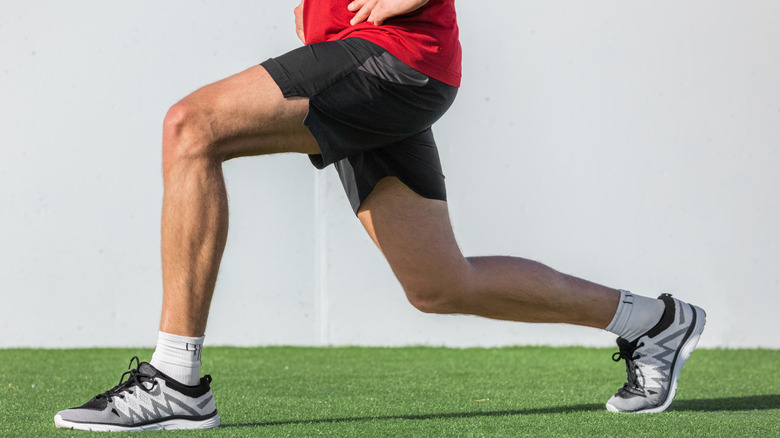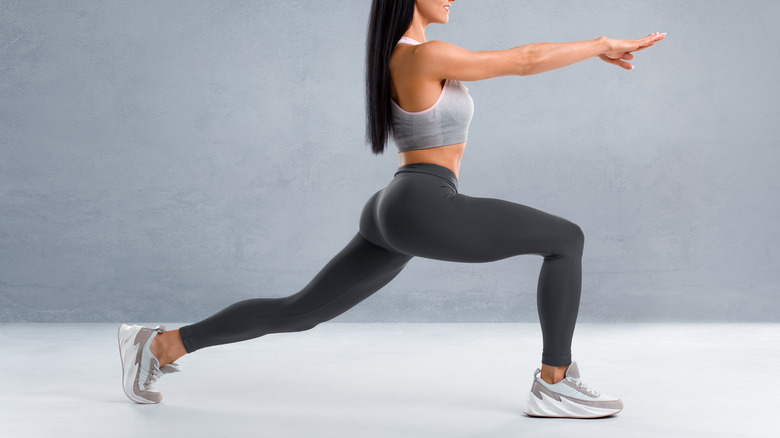The Mistake You're Probably Making With Your Lunges
Lunges are one of the easiest and most effective lower body exercises to do, whether or not you have access to weights. But while the movement itself is relatively simple, it's also easy to fall into bad habits with your lunges, making them less effective for improving mobility and muscle tone. Here's what you need to know about correcting your lunge mistakes.
First, you may be out of alignment. If you're noticing pain or aches after a lunge set, your form might be to blame. "Lunges should not cause you pain in your knees, back, or shoulders," Instagram-famous personal trainer Kayla Itsines explains. You might be letting your torso lean forward, or you may have the alignment of your feet too close together. Your feet should be shoulder-width apart: you may want to do a lunge facing a mirror head-on in order to assess your foot placement (via Well + Good).
You may also think that bringing your back knee down to the ground is the only way to do a correct lunge, but in reality, your back knee should either lightly touch the ground, or hover just above it when you're going down in your lunge, before lifting and straightening the back leg (via Barbend.com).
What else can be a mistake during lunges?
You might be going too far forward with your front knee, trying to make your lunge more dramatic. Your goal should be to see all of your toes over your knee: If your kneecap covers your toes, you're too far forward. And use your index toe as a guideline for the direction of your kneecap. Aim towards that toe to keep your knee tracking in a straight line (via VerywellFit.com).
For maximum benefit from your lunge, make sure your core remains engaged through the entire movement. Try to feel the muscles in your torso contracting: Your core should almost feel like you're holding a plank position while you're doing your lunges. This will not only keep you more stable, it will also add in some bonus core work to the movement (via Prevention).
Lastly, don't just casually do your lunges for the sake of getting them done. Pay close attention to every movement, and really let your muscles do the work. With lunges, it can be easy to phone them in and technically get the repetitions, without actually getting any of the benefits. It should feel like work (via MyFitnessPal).


